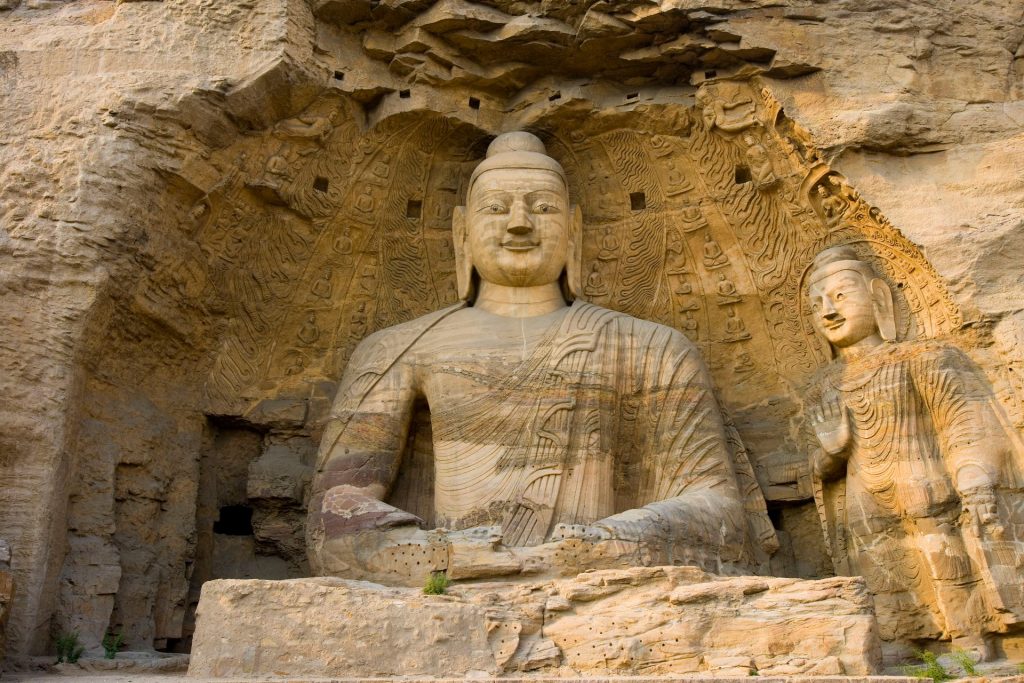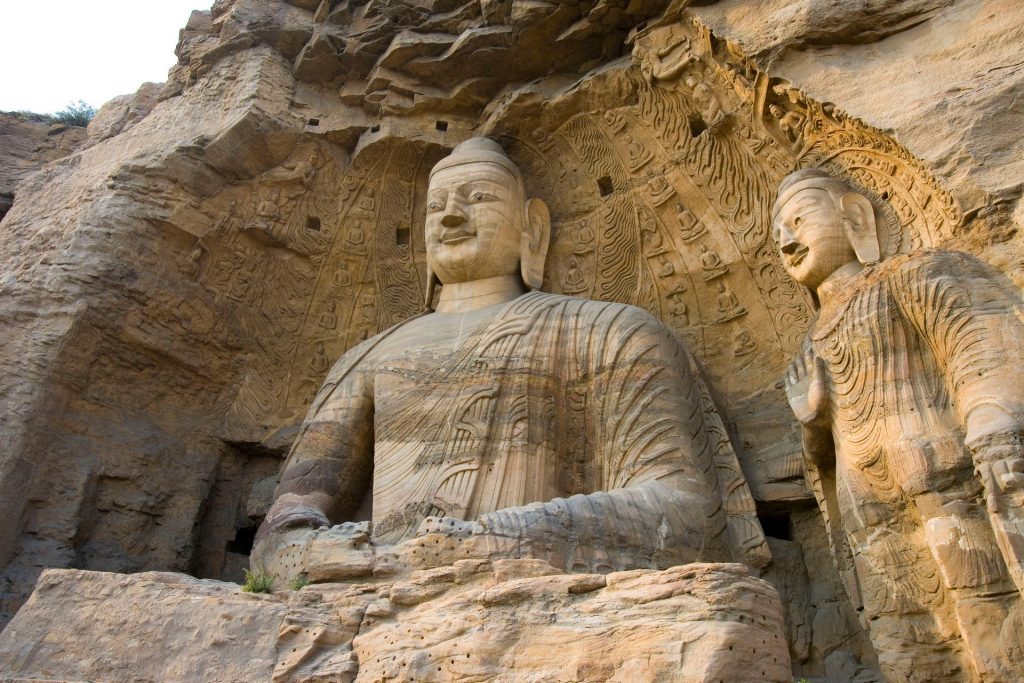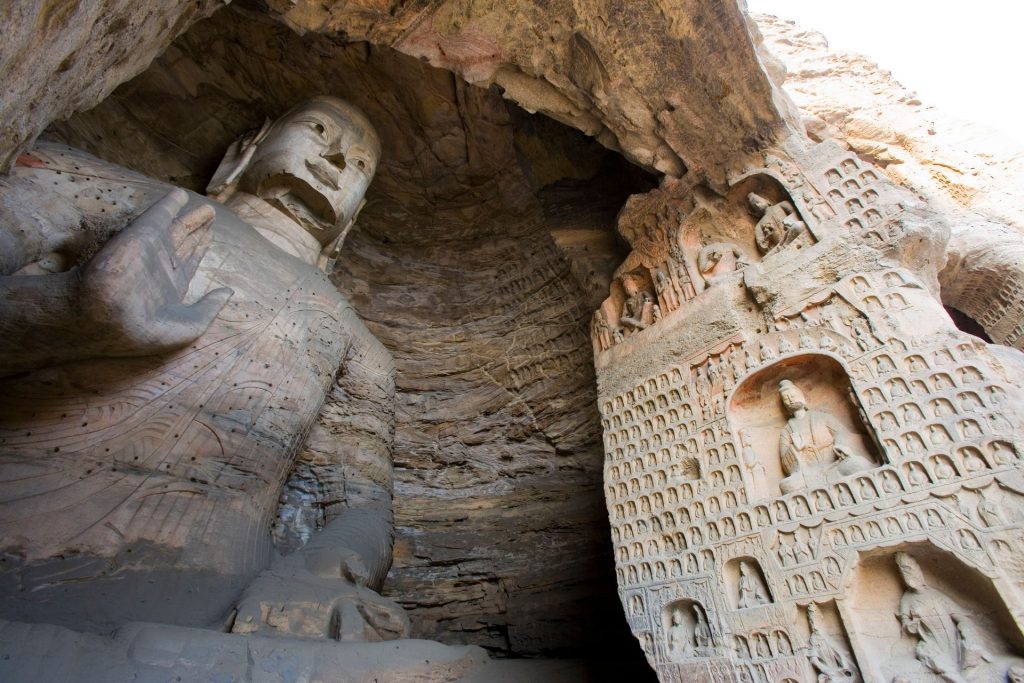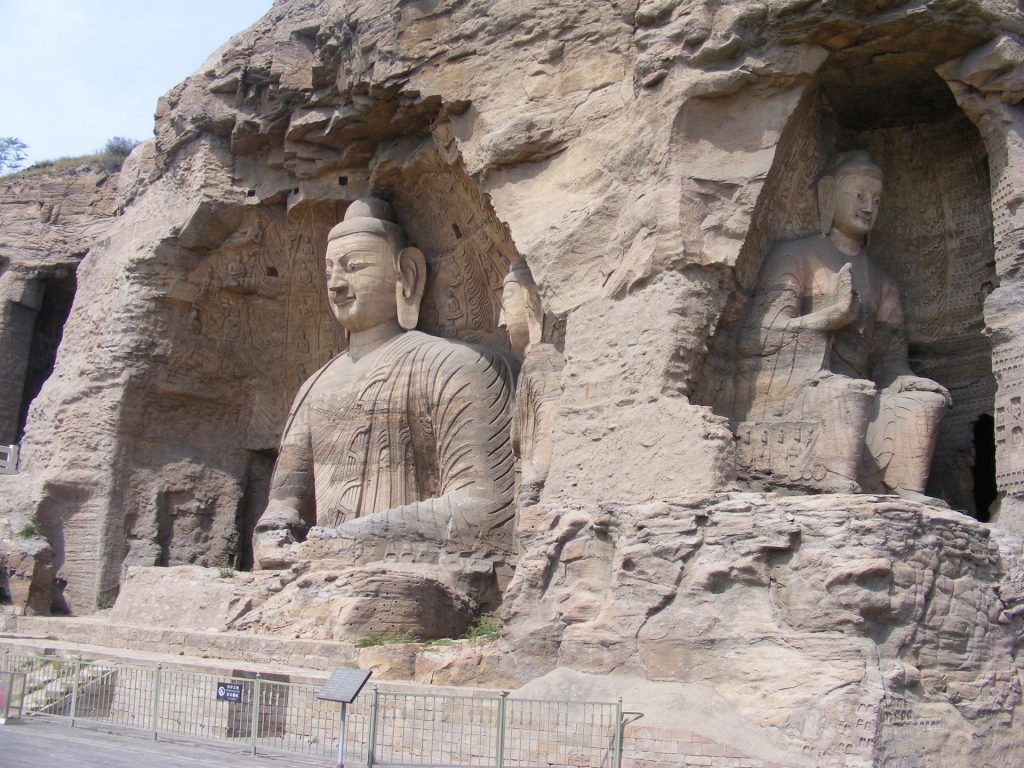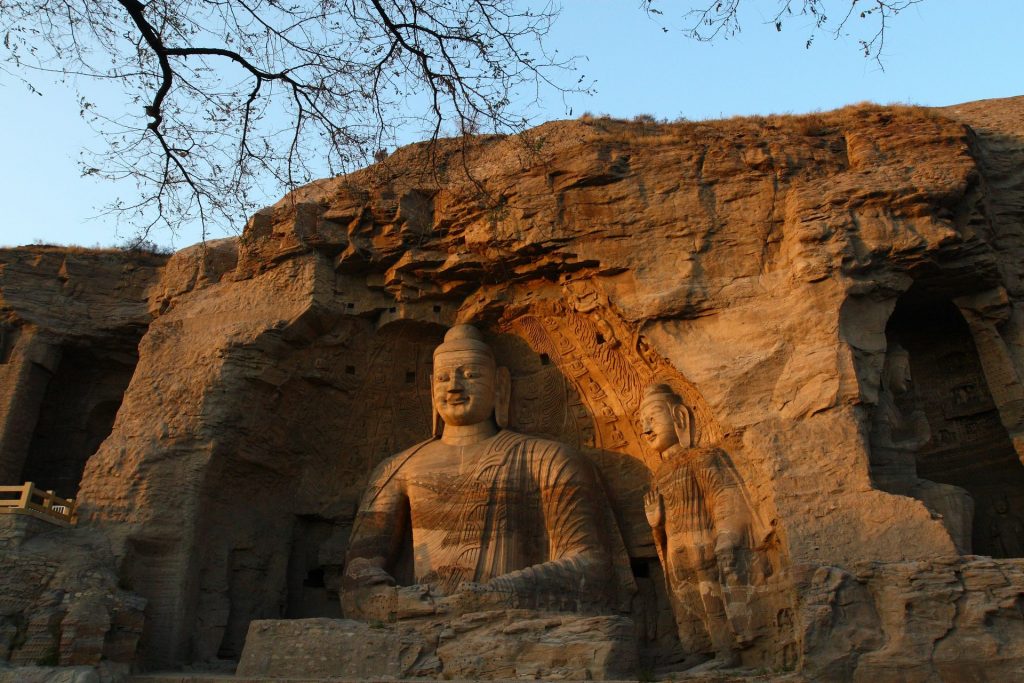Yungang Grottoes located in the south of Wuzhou mountain north bank of Ten-Mile River. It is about 16 kilometers to the southwest of Datong in Shanxi Province, China. Being one of UNESCO World Heritage Site, Yungang Grottoes is said to be the best preserved Buddhist cave art in China with 53 caves containing over 51,000 stone carvings of Buddha and Buddhist dating from the 5th and 6th centuries. It is one of the four most famous ancient grottoes artistic treasures of China. The other three are Mogao Grottoes in Dunhuang, Longmen Grottoes in Luoyang and Maiji Mountain Grottoes in Tianshui. On December 14, 2001, Yungang Grottoes was included in the UNESCO’s World Cultural Heritage List.
History of Yungang Grottoes
The Northern Wei early adopted Buddhism as their state religion. Buddhism arrived in this location via travel on the ancient North Silk Road. The grottoes were mainly constructed between 460-525 AD during the Northern Wei dynasty, represent exceptional feat of Buddhist cave art in China in the 5th and 6th century. The construction was split into to three periods, and it has got a total number of 53 grottoes consisting of more than 51,000 Buddha statues and statuettes. The work on its first period of carving started from 460 AD and lasted until the year 465 AD, and the caves are now known as Caves 16–20, also known as the Tan Yao Cave. Beginning around the year 471 AD, in a second construction period (also the golden stage of the Yungang Grottoes) that lasted until 494 AD, the twin caves 5/6, 7/8, and 9/10 as well as the caves 11, 12, 13 and unfinished Cave 3 were constructed under the supervision and support of the imperial court. The imperial patronage ended 494 AD with the move of the Northern Wei court to the new capital of Luoyang. In 494, the Wei moved their capital from Datong to Luoyang and the Yungang Grottoes slowly fell into decay.
All other caves emerged under private patronage in a third construction period, lasting until 524 AD, when the construction came to a final halt due to uprisings in the area. Caves constructed in the third period were mainly sited in the west of Cave 20, 4, 14, 15 and 11. In the west of the small niche of the cliff face, there are no more than 200 small and medium-sized caves. The cave is mostly the form of a single cave, no longer in groups.
The eastern part of the Yungang Grottoes was built earlier than the other parts, and focused mainly on the building of pagodas, the grottoes in the middle have a front chamber and a rear chamber, with the leading statue of Buddha settled in the middle-talland robust-and the walls and ceilings of the grottoes are filled with relief. The western grottoes were built a litter later, most of which are medium-sized or small grottoes with a dominant number of small niches in which the statues excel in their thinness. These statues in this place range from the tallest of 17 meters to the shortest of a few centimeters high with some of them still retain their original color. The lines of the statue’s face are very graceful, with a pair of bright piercing eyes. Construction of the Yungang Grottoes was mainly financed by royal families and noble families, and the imposing manner and elaborate carvings of these Buddha images incorporate the artistic styles of China, India, Persia and other countries.
Yungang Grottoes has gone through 1500 years of vicissitudes. Due to changes of geological and environmental conditions in the grotto area, it experienced natural weathering and human vandalism to varying degrees, resulting in different degrees of damage of caves and statues. The caves used to be protected by wooden temple buildings, but most of them burnt down. Many of the artwork was stolen in the early 20th century and now resides in museums and private collections around the world.
The fusion of Buddhist religious symbolic art from central and south Asia with Chinese cultural tradition is the noted highlight of the site. Yungang Grottoes have been quite successful in vividly illustrating the power and endurance of the Buddhist belief in China. It is a must see destination for you if you are the one who loves to explore the architectural brilliance of the world.
Travel Guide
【Recommended time to stay】: half a day
【How to get there】: Yungang Grottoes is not far away from Datong downtown. The most convenient way is by taxi. If you want to save money, you may take public bus. You may take Bus No 4 from Datong Railway Station or Bus 26 from Datong Long-distance Bus Station to Xin Kai Li Stop first, then transfer to Bus 3 to get to Yungang Grottoes scenic spot directly.

